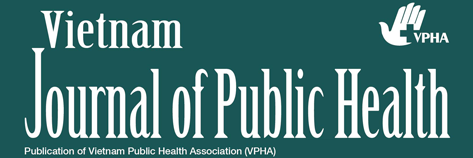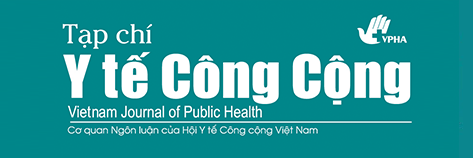Sự bùng phát dịch HIV ở người nghiện chích ma túy trẻ ở Quảng Ninh: Các yếu tố nguy cơ nhiễm HIV (HIV explosive epidemic among young Injecting Drug Users (IDUs) in Quang Ninh: HIV risk factors)
Tóm tắt
Mục tiêu của nghiên cứu là nhằm mô tả các yếu tố nguy cơ nhiễm HIV ở thanh niên nghiện chích ma túy ở tỉnh Quảng Ninh- Việt Nam. Nghiên cứu đã sử dụng phương pháp điều tra ngang tiến hành ở người nghiện chích ma túy (NCMT) ở vùng đô thị của tỉnh Quảng Ninh (Thành phố Hạ Long và thị xã Cẩm Phả) vào tháng 4/2000. Tổng số 602 người nghiện chích ma túy đã được lựa chọn bằng kỹ thuật “Hòn tuyết lăn”, sau đó được xét nghiệm và phỏng vấn về HIV. Các yếu tố tiên đoán về tình trạng nhiễm HIV đã được xác định bằng phân tích hồi quy đơn biến và đa biến.
Nghiên cứu đã đưa ra kết quả: 99,2% người nghiện chích ma túy là nam giới và 57% dưới 20 tuổi. (Tuổi trung bình là 20,3; SD= 4,8). Tỷ lệ nhiễm HIV ở người nghiện chích ma túy là 32%. 50,7% người nghiện chích ma túy đa báo cáo có dùng chung bơm kim tiêm trong 6 tháng qua. Tỷ lệ dùng bao cao su thường xuyên với gái mại dâm trong 12 tháng qua là 39,6%. Tình trạng nhiễm HIV có liên quan với các yếu tố sau: Trên 20 tuổi, có nghề nghiệp, tiêm chích ma túy hơn 2 năm, tiêm chích ma túy hơn 14 lần một tuần, dùng lại bơm kim tiêm đã dùng và đã từng ở trung tâm cai nghiện, đã từng có sinh hoạt tình dục. Qua phân tích đa biến, những yếu tố tiên đoán tình trạng nhiễm HIV là: Trên 20 tuổi, tiêm chích hơn 14 tuần mỗi lần, và tiêm chích hơn 3 năm.
Từ kết quả nghiên cứu trên, nhóm nghiên cứu đã kết luận: Người nghiện chích ma túy ở Quảng Ninh là rất trẻ, có tỷ lệ nhiễm HIV cao, và có nhiều hành vi nguy cơ cao nhiễm HIV. Xây dựng môi trường hỗ trợ trong việc thay thế hành vi là cần thiết. Về lâu dài, cần phải có chiến lược dự phòng sử dụng ma túy và nghiện chích ma túy trong thanh niên.
English abstract
The study’s objective is to describe HIV infection risk factors among young injecting drug users (IDUs) in two urban areas in Quang Ninh province (Ha Long city and Cam Pha town) in April 2000 by a cross-section study. As many as 602 IDUs were chosen by "snow ball" technique, and after that, they were tested for HIV and interviewed. The study used simple and multiple regression analysis to identify predictive factors of HIV infection. It was found that 99,2% of IDUs are men and 57% are under 20 years old. (Medium age: 20,3; SD=48). 32% of IDUs are HIV infected, 50,7% reported that they had needle sharing for over last 6 months, and 39,6% used condom regularly when having sexual intercourse with sex workers over the last 12 months. HIV infection is related to the following factors: being more than 20 years old, being empoyed, having drug injecting practice for over more than two years, practising drug injection more than 14 times per week, reusing injection needles, having attended in rehabiliation centers, having been involved in sexsual activities. By using multiple regression analysis, factors used to predict HIV infection are: being more than 20 years old, practising drug injection more than 14 times per week, having drug injecting practice for over more than 3 years. In conclusion, IDUs in Quang Ninh are very young and have many high risk behaviors. It is necessary to build a supportive environment for their behavior change. In the long-term, it is necessary to develop drug use/injecting drug use prevention strategy for young people.
Từ khóa
Toàn văn:
PDF (English)##submission.citations##
UNAIDS. Drug use and HIV infection. UNAIDS statement presented at the United Nations General Assembly Special Session on Drugs: UNAIDS, 1999.
Des Jarlais DC, Friedman SR, Choopanya K, et al. International epidemiology of HIV and AIDS among injecting drug users. AIDS 1992;6:1053-64
Dehne KL, Khodakevich L, Hamers FF, et al. The HIV/AIDS epidemic in eastern Europe: recent patterns and trends and their implications for policy-making. AIDS 1999;13(7):471-9.
Croft N, Reid G, Deany P in collaboration with the Asian Harm Reduction Network: Injecting drug use and HIV infection in Asia. AIDS 1998;12 (suppl B): 69-79
Hien NT, Long HT, Chi PK, et al. HIV monitoring in Vietnam: System, Methodology, and results of sentinel surveillance. J Acquir Immune Defic Syndr 1999;21(4):338-46.
Quan VM, A C, Long HT, et al. HIV in Vietnam: The evolving epidemic and the prevention response, 1996 through 1999. J Acquir Immune Defic Syndr 2001;25(4):360-9.
UNAIDS Vietnam. Facts about HIV/AIDS in Vietnam, Hanoi, June 2001:10-11
Nguyen TA, Hoang LT, Pham VQ, et al. Risk factors for HIV-1 seropositivity in drug users under 30 years old in Hai phong, Vietnam. Addiction 2001;96(3):405-13,
Hien NT, Giang LT, Binh PN, et al. The social context of HIV risk behavior by drug injectors in Ho Chi Minh City, Vietnam. AIDS Care 2000;12(4):483-495.
World Health Organization/Program on substance abuse: Multi-City Study on Drug Injecting and Risk of HIV Infection. A report prepared on behalf of the WHO International Collaborative Group. 1994;WHO/SPA/94.4.
Lai S, Chen J, Celentano D, et al. Adoption of injection practices in heroin users in Guangxi Province, China. J Psychoactive Drugs 2000;32(3):285-92
Kral AH, Bluthenthal RN, Lorvick J, et al. Sexual transmission of HIV-1 among injection drug users in San Francisco, USA: risk-factor analysis. Lancet
; 357 (9266):1397-401
Diaz T, Vlahov D, Greenberg B, et al. Sexual Orientation and HIV Infection Prevalence among Young Latino Injection Drug Users in Harlem. J Womens Health Gend Based Med 2001;10(4):371-80.
Doherty MC, Garfein RS, Monterroso E, et al. Correlates of HIV infection among young adult short-term injection drug users. AIDS 2000; 14(6): 717-26.
Choopanya K, Vanichseni S, Des Jarlais DC, et al. Risk factors and HIV seropositivity among injecting drug users in Bangkok. AIDS 1991;5:1509-13.
Magura S, Shapiro J, Siddiqui Q, et al. Variables influencing condom use among intravenous drug users. American Journal of Public Health 1990;80: 82-4
Panda S, Chatterjee A, Bhattacharya SK, et al. Transmission of HIV from injecting drug users to their wives in India. Int J STD AIDS 2000;11(7):468-73
Schlumberger MG, Desenclos JC, Papaevangelou G, et al. Knowledge of HIV serostatus and preventive behaviour among European injecting drug users: second study. European Community Study Group on HIV in Injecting Drug Users. Eur-J-Epidemiol. 1999; 15 (3): 207-15
Des Jarlais DC, Hagan H, Friedman SR, Friedman P, et al. Preventing epidemic of HIV-1 among injecting drug users. In Drug Injecting and HIV infection. Edited by Stimson G, Des Jarlais DC, and Ball A, WHO, UCL Press, 1998; 183-200
Vlahov D, Junge B. The role of needle exchange programs in HIV prevention. Public-Health-Rep. 1998; 113 (Suppl)1: 75-80
Schechter MT, Strathdee SA, Cornelisse PG, et al.Do needle exchange programmes increase the spread of HIV among injection drug users?: an investigation of the Vancouver outbreak. AIDS 1999; 13(6):45-51
Monterroso ER, Hamburger ME, Vlahov D, et al. Prevention of HIV infection in street-recruited injection drug users. The Collaborative Injection Drug User Study (CIDUS). J Acquir Immune Defic Syndr 2000; 25(1):63-70



